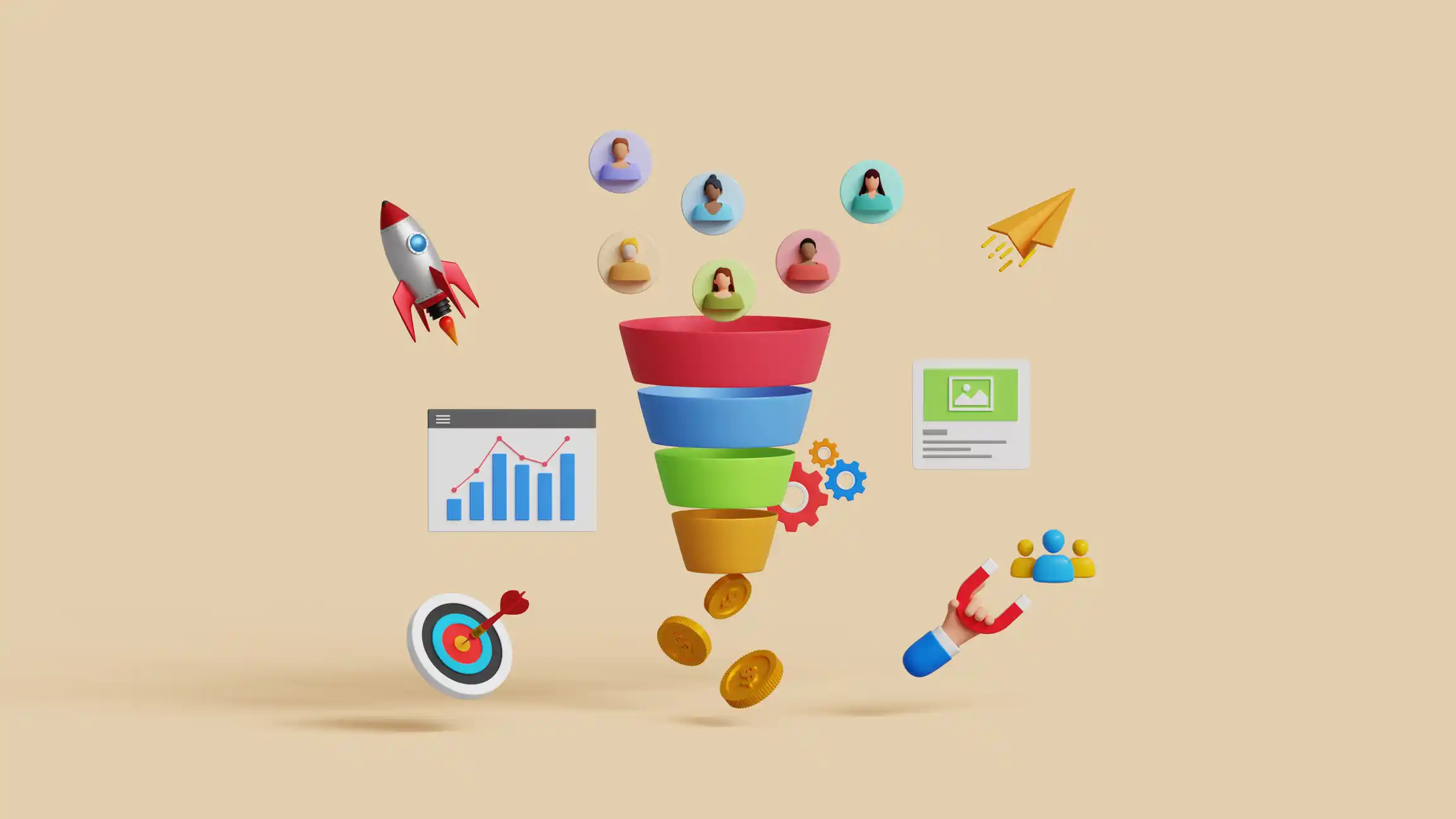What is a Landing Page?
A landing page is a standalone web page designed to serve as the entry point for a website visitor or a user who clicks on a specific link or advertisement. Unlike typical web pages on a website, which often have a range of content and navigation options, a landing page is focused on a single goal or call to action (CTA).
Its primary purpose is to encourage visitors to take a specific action, such as signing up for a newsletter, downloading an e-book, making a purchase, or requesting more information.
Key components of a landing page
- Singular Focus: Best landing pages are designed with a single, clear objective in mind. They eliminate distractions and extraneous information that might divert visitors from the intended action.
- Engaging Content: Effective landing pages use persuasive and engaging content, including headlines, copy, images, and videos, to convince visitors to take the desired action.
- Call to Action (CTA): A landing page prominently features a CTA button or form instructing visitors on what action to take. CTAs use action-oriented language to encourage engagement, such as ‘Sign Up Now’ or ‘Get Started.’
- Minimal Navigation: Unlike typical websites with navigation menus, landing pages usually have minimal navigation options. The goal is to keep visitors focused on the primary CTA without distractions.
- Trust Elements: To build trust and credibility, landing pages often include customer testimonials, reviews, trust badges, security symbols, or endorsements from recognized authorities.
- Form Fields (If Applicable): When the goal is to capture visitor information, landing pages incorporate user-friendly forms with fields for entering data such as name, email address, and phone number. These forms should be concise and easy to complete.
- Tracking and Analytics: Landing pages are typically equipped with tracking tools, such as Google Analytics or marketing automation software, to monitor user behavior, conversion rates, and other vital metrics.
Landing pages are commonly used in online marketing campaigns, such as pay-per-click (PPC) advertising, email marketing, and social media promotions, where businesses want to direct visitors to take a specific action rather than just browsing a website. The focused design and compelling content make them a powerful tool for lead generation, sales, and marketing efforts.
The Power of a Well-Designed Landing Page
A landing page serves a specific purpose in your marketing strategy – to persuade visitors to take a desired action, whether making a purchase, signing up for a newsletter, or downloading a resource. So, when you are in the initial phase contemplating how to make a landing page, consider the following essentials:
1. Clear and Compelling Headlines
The headline is the first thing visitors see on your website. Make it concise, engaging, and directly related to your offer. It should grab attention and convey the value of your product or service. A clear and compelling headline is the gateway to capturing your audience’s interest and driving them to take the desired action on your landing page.
It’s an essential component of effective landing page design and should be carefully crafted to convey your message succinctly and persuasively. You can create headlines that entice visitors to engage with your offer by focusing on clarity, relevance, and emotional appeal.
2. Persuasive Copywriting
Craft a persuasive and concise copy that highlights the benefits of your offer. Use persuasive language to address pain points and emphasize the solution your product or service provides. The persuasive copywriting should be clear, impactful, and customer-centric, driving home the value of your offer and leaving no doubt in the visitor’s mind that they should take that next step, whether it’s making a purchase, signing up, or downloading.
Ultimately, persuasive copywriting is the voice that guides visitors from being curious to become customers, making it an indispensable element of a successful landing page.
3. Engaging Visuals
Engaging visuals is vital to an effective landing page, captivating visitors and conveying information quickly and effectively. These visuals include images, videos, graphics, and other elements supporting your message and reinforcing your call to action (CTA). High-quality visuals enhance the aesthetics of your landing page and play a significant role in influencing visitor behavior.
A well-chosen image or video can evoke emotions, provide clarity, and build trust, ultimately increasing the likelihood of conversion. When incorporating visuals into your landing page, ensure they are relevant, impactful, and aligned with your overall message and branding to create a visually appealing and persuasive user experience.
4. Distinctive Call-to-Action (CTA)
Your CTA button should stand out and clearly state the action you want visitors to take. Use action-oriented language such as ‘Get Started,’ ‘Subscribe Now,’ or ‘Shop Here.’ A distinctive CTA should capture the visitor’s attention and persuade them to take the desired action, be it signing up for a newsletter, making a purchase, or downloading a resource.
To achieve this, it should be compelling and strategically placed within the landing page. By mastering the art of crafting a distinctive CTA, businesses can maximize the effectiveness of their landing pages and drive desired outcomes from their online traffic.
5. Mobile Responsiveness
Ensure your landing page is mobile-responsive. A large portion of internet traffic comes from mobile devices, and a mobile-friendly design improves user experience and conversions. Mobile responsiveness is a critical element of landing page design, as it increases users’ access to websites and landing pages on smartphones and tablets.
To maximize your landing page’s impact, it’s crucial to incorporate mobile responsiveness. Your landing page should adapt seamlessly to various screen sizes, load quickly, and provide an excellent user experience regardless of the device.
6. User-Friendly Forms
If your goal is to capture leads, keep your forms simple and easy to fill out. One crucial element in this process is the user-friendly form. To optimize your landing page, ensure that your forms are concise, easy to fill out, and collect only essential information. Lengthy or complicated forms can deter potential conversions.
Use clear labels and provide helpful hints to streamline the form-filling process. Prioritize user experience to reduce friction, boost engagement, and drive higher conversion rates.
7. A/B Testing
Regularly conduct A/B tests to optimize your landing page. This involves systematically experimenting with elements such as headlines, visuals, CTAs, and form fields to determine what resonates best with your audience.
By continuously optimizing these elements through A/B testing, businesses can maximize conversion rates and drive growth, ensuring their landing pages deliver exceptional results in achieving specific goals, from lead generation to sales and beyond.
8. Speed and Performance
A fast-loading landing page is crucial for user experience. Slow pages can lead to high bounce rates, negatively impacting conversions. When it comes to crafting effective landing pages, speed and performance are essential. A slow-loading landing page can deter visitors and lead to high bounce rates, undermining your conversion goals.
To ensure optimal performance, streamline your landing page by minimizing heavy graphics, optimizing images, and reducing unnecessary scripts. Utilize content delivery networks (CDNs) to enhance loading times across geographic locations.
9. Analytics and Tracking
Implement analytics tools such as Google Analytics to monitor user behavior on your landing page: track conversion rates, bounce rates, and other key metrics to assess performance.
Finally, integrating Google Analytics empowers you to monitor visitor behavior and provides insights for ongoing refinement and success in your marketing campaigns.
10. Trust Signals
Build trust with your audience by displaying trust signals such as customer testimonials, reviews, trust badges, and industry certifications. In addition to these fundamentals, trust signals are pivotal in instilling confidence and authenticity in your offer.
By showcasing customer testimonials, reviews, and trust badges, you create a reassuring environment for your audience, increasing the likelihood that they’ll take the desired action, whether it’s signing up, making a purchase, or downloading content.
Harnessing the power of landing pages with trust signals can significantly impact your online marketing success, converting clicks into loyal customers and clients.
Creating an effective landing page that converts clicks into customers is an art and a science. It requires a deep understanding of your target audience, compelling copy, persuasive visuals, and continuous optimization. You can maximize your conversion rates and drive business growth by implementing these landing page essentials and continuously refining your approach through testing and analysis.
Whether selling products, capturing leads, or promoting content, a well-crafted and high-converting landing page is your ticket to turning casual visitors into satisfied customers. So, make every click count and watch your online success soar.
Are you ready to enhance the visibility of your landing page and convert your clicks? Harness the power of tailored digital marketing solutions with a free consultation from New Path Digital. Our seasoned experts are poised to walk you through the journey, crafting a tailored approach that resonates with your firm’s objectives.
Reach out to us today for a free consultation to embark on this transformative path!











